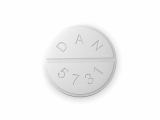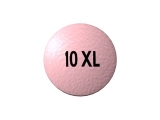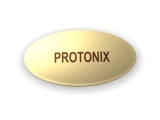Pharmacy glossary of terms
As consumers, we often find ourselves in a pharmacy, whether it's to pick up a prescription or to browse the aisles for over-the-counter remedies. However, the world of pharmacy can be complex, with its own vocabulary and terminology. Understanding common terms and definitions is essential for navigating the pharmacy and making informed decisions about our health.
Prescription: A prescription is a written order from a licensed healthcare provider, such as a doctor or nurse practitioner, for a specific medication. This document includes important information, such as the patient's name, the name of the medication, dosage instructions, and the number of refills allowed. It is necessary to have a prescription to obtain certain medications from a pharmacy.
Generic: Generic medications are copies of brand-name drugs that have the same active ingredients, dosage form, strength, and route of administration. They are required by law to be just as safe and effective as their brand-name counterparts, but they are often available at a lower cost. Generic medications usually have a different name than the brand-name drug, but the active ingredient remains the same.
Over-the-Counter (OTC): Over-the-counter medications, also known as OTC drugs, are drugs that can be purchased without a prescription. These medications are typically intended for self-treatment of common ailments, such as allergies, colds, and minor pain. OTC drugs are regulated by the Food and Drug Administration (FDA) to ensure their safety and efficacy.
Pharmacist: A pharmacist is a healthcare professional who is licensed to prepare, dispense, and advise on medications. They play a crucial role in the healthcare system by ensuring that medications are safe and effective, providing patient counseling, and monitoring for potential drug interactions. Pharmacists work in various settings, including community pharmacies, hospitals, and healthcare clinics.
Side Effects: Side effects are unwanted or unexpected effects that can occur when taking a medication. They may range from minor discomfort, such as nausea or drowsiness, to more serious reactions. It is important to be aware of the potential side effects of medications and to report any adverse reactions to a healthcare provider or pharmacist.
What is a Pharmacy?
A pharmacy is a place where medications are dispensed and managed. It is a specialized establishment, often located within a hospital or standalone building, where pharmacists and pharmacy technicians work to ensure the safe and effective use of medications. Pharmacies play a crucial role in the healthcare system by providing prescription drugs, over-the-counter medications, and pharmaceutical services to patients.
Pharmacies are responsible for preparing and dispensing prescribed medications in the appropriate dosage and form, such as tablets, capsules, or liquids. They also offer counseling on the proper use and potential side effects of medications to ensure patient safety and adherence to treatment plans.
Pharmacist:
A pharmacist is a healthcare professional who is licensed to prepare, dispense, and provide expertise on medications. They are responsible for reviewing prescription orders, checking for drug interactions, and counseling patients on appropriate medication use. Pharmacists play a vital role in patient care by collaborating with other healthcare professionals and ensuring the safe and effective use of medications.
Pharmacy Technician:
A pharmacy technician works closely with pharmacists to assist in the preparation and dispensing of medications. They perform tasks such as medication inventory management, prescription data entry, and medication labeling. Pharmacy technicians play a crucial role in supporting the workflow of a pharmacy and ensuring that medications are accurately prepared and delivered to patients.
In addition to dispensing medications, pharmacies may offer additional services such as medication therapy management, immunizations, and health screenings. These services aim to optimize patient health outcomes and promote patient education on medication-related topics.
Overall, pharmacies are essential healthcare establishments that provide a wide range of medications and services to patients. They serve as a crucial link between healthcare providers and patients, ensuring medication safety, accessibility, and adherence to treatment plans.
Common Terms in Pharmacy
1. Prescription
Prescription refers to a written order from a healthcare provider that authorizes a pharmacist to dispense a specific medication to a patient. It includes information such as the patient's name, the medication prescribed, dosage instructions, and any additional instructions or precautions.
2. Generic Drug
A generic drug is a medication that has the same active ingredients, dosage form, strength, and route of administration as its brand-name counterpart. Generic drugs are typically more affordable than brand-name drugs and undergo rigorous testing to ensure their safety and effectiveness.
3. Over-the-Counter (OTC)
Over-the-counter drugs, also known as OTC drugs, are medications that can be purchased without a prescription. These drugs are generally considered safe for self-medication and are used to treat common ailments such as headaches, allergies, and minor aches and pains.
4. Dosage
Dosage refers to the amount of medication prescribed or recommended to be taken at one time. It may be expressed in various forms, such as milligrams (mg), milliliters (ml), or a specific number of tablets or capsules. Following the correct dosage instructions is crucial to ensure the desired therapeutic effect and minimize potential side effects.
5. Side Effects
Side effects are unwanted or unexpected effects that may occur when taking a medication. They can range from mild to severe and may vary from person to person. Common side effects include drowsiness, nausea, headache, and dry mouth. It is important to report any severe or persistent side effects to a healthcare provider.
- 6. Drug Interactions
- 7. Expiration Date
- 8. Prescription Label
In conclusion, understanding common terms and definitions in pharmacy is essential for patients to safely and effectively use medications. It is important to follow dosage instructions, be aware of potential side effects, and consult a healthcare provider or pharmacist if any concerns or questions arise.
Drug Classifications and Definitions
When it comes to medications, understanding the different drug classifications and their definitions is essential. Drug classifications are categories that drugs are grouped into based on their chemical structure, therapeutic use, and other characteristics. Each classification has its own set of definitions and guidelines for use.
1. Analgesics
Analgesics are drugs that relieve pain. They can be classified into two main categories: non-opioid analgesics and opioid analgesics. Non-opioid analgesics, such as acetaminophen and nonsteroidal anti-inflammatory drugs (NSAIDs), work by reducing inflammation and inhibiting the production of certain chemicals in the body that cause pain. Opioid analgesics, such as morphine and codeine, work by binding to opioid receptors in the brain, blocking pain signals and providing pain relief.
2. Antibiotics
Antibiotics are medications used to treat bacterial infections. They can be classified into several subcategories, including penicillins, cephalosporins, macrolides, and fluoroquinolones. Each subcategory has its own unique mechanism of action and spectrum of activity against different types of bacteria. Antibiotics work by either killing bacteria or inhibiting their growth, helping the immune system fight off the infection.
3. Antidepressants
Antidepressants are medications used to treat depression and other mood disorders. They can be classified into several categories, including selective serotonin reuptake inhibitors (SSRIs), serotonin-norepinephrine reuptake inhibitors (SNRIs), and tricyclic antidepressants (TCAs). Each category has its own mechanism of action and is used to target different neurotransmitters in the brain to alleviate symptoms of depression and improve mood.
4. Antihypertensives
Antihypertensives are drugs used to lower high blood pressure. They can be classified into several categories, including angiotensin-converting enzyme (ACE) inhibitors, beta blockers, calcium channel blockers, and diuretics. Each category works in a different way to relax blood vessels, reduce fluid volume, or decrease the heart's pumping action, all of which help lower blood pressure and reduce the risk of cardiovascular complications.
5. Antidiabetic Agents
Antidiabetic agents are medications used to control blood sugar levels in individuals with diabetes. They can be classified into several categories, including insulin, sulfonylureas, biguanides, and thiazolidinediones. Each category works in a different way to either stimulate insulin production, improve insulin sensitivity, or decrease the production of glucose in the liver, helping to regulate blood sugar levels.
6. Anticoagulants
Anticoagulants, also known as blood thinners, are medications used to prevent the formation of blood clots. They can be classified into several categories, including heparin, low molecular weight heparin (LMWH), warfarin, and direct oral anticoagulants (DOACs). Each category works by interfering with the blood clotting process, either by preventing the formation of clotting factors or inhibiting specific enzymes involved in blood clotting, reducing the risk of clot formation and preventing complications like deep vein thrombosis and stroke.
In conclusion, understanding drug classifications and their definitions is crucial for healthcare professionals and patients alike. It allows for proper identification, selection, and use of medications, ensuring optimal therapeutic outcomes and minimizing the risk of adverse effects.
The Role of Pharmacists
Primary Responsibility: Dispensing Medications
Pharmacists play a crucial role in the healthcare system by ensuring that patients receive the correct medications and dosages prescribed by their healthcare providers. They are responsible for accurately dispensing medications to patients and providing them with clear instructions on how to take their medications. Pharmacists also play a vital role in preventing medication errors by verifying prescriptions, checking for drug interactions, and ensuring proper medication storage.
Medication Counseling and Patient Education
In addition to dispensing medications, pharmacists also provide medication counseling and education to patients. They help patients understand the purpose of their medications, the potential side effects, and any special instructions or precautions they need to follow. Pharmacists advise patients on how to take their medications correctly and answer any questions or concerns they may have. They are an important resource for ensuring that patients have the knowledge they need to take their medications safely and effectively.
Collaboration with Healthcare Providers
Pharmacists work closely with other healthcare providers, such as doctors and nurses, to ensure coordinated and comprehensive patient care. They collaborate with healthcare teams to review medication regimens, identify potential drug interactions or contraindications, and make recommendations for medication adjustments when necessary. Pharmacists also serve as medication experts, providing valuable input and expertise on drug therapies to improve patient outcomes.
Medication Management and Health Promotion
Pharmacists assist patients in managing their medications and promote overall health and wellness. They may conduct medication reviews to assess the appropriateness and effectiveness of prescribed medications. Pharmacists also offer guidance on lifestyle modifications, such as diet and exercise, that can support optimal health outcomes. They may provide immunizations, administer health screenings, and offer advice on over-the-counter medications or self-care remedies.
Advocacy for Patient Safety
Pharmacists are strong advocates for patient safety. They play an active role in monitoring and reporting adverse drug events, medication errors, and other medication-related incidents. Pharmacists actively participate in medication safety initiatives and quality improvement programs to enhance patient care. They also contribute to the development and implementation of policies and protocols that promote safe medication use and prevent medication-related harm.
Pharmaceutical Abbreviations and Acronyms
When dealing with medications, it's important to understand the various abbreviations and acronyms commonly used in the pharmaceutical industry. Here are some key terms to familiarize yourself with:
ADME
ADME stands for absorption, distribution, metabolism, and excretion. This acronym is used to describe the processes by which a drug is absorbed into the body, distributed throughout the body, metabolized, and eliminated.
OTC
OTC stands for over-the-counter. This term refers to medications that can be purchased without a prescription from a healthcare professional. OTC drugs are typically used to treat minor ailments or symptoms.
BID
BID stands for "twice a day." This abbreviation is often used when prescribing medication that needs to be taken two times daily. It's essential to follow the prescribed dosing schedule to ensure the medication's effectiveness.
PRN
PRN stands for "as needed." This abbreviation is used when a medication is to be taken only when necessary, rather than on a set schedule. It's important to follow the instructions provided by the healthcare professional to avoid overuse or dependence on PRN medications.
BBW
BBW stands for "boxed warning." A boxed warning is the most serious warning label placed on a drug's package insert by the Food and Drug Administration (FDA). It alerts healthcare professionals and patients about potential risks and side effects associated with the medication.
Rx
Rx is a common abbreviation for "prescription." It indicates that a medication can only be obtained with a valid prescription from a healthcare professional. Only licensed practitioners can write prescriptions for Rx medications.
These are just a few examples of the many abbreviations and acronyms used in the pharmaceutical industry. It's important to familiarize yourself with these terms to ensure safe and effective use of medications.
Resources for Further Understanding
If you are interested in expanding your knowledge of pharmacy terminology, there are several resources available to help you. Here are a few suggestions:
1. Online Dictionaries and Glossaries
A quick search on the internet will yield many online dictionaries and glossaries specifically focused on pharmacy terminology. These resources can provide definitions and explanations for a wide range of pharmacy-related terms. Some popular online dictionaries and glossaries include:
- MedicineNet: Offers a comprehensive medical dictionary with a specific section for pharmacy-related terms.
- Pharmacy Times: Provides a digital glossary that covers a wide range of pharmacy terms.
- DrugBank: Offers a drug and medication database that includes information on drug names, uses, and classifications.
2. Textbooks and Reference Guides
Pharmacy textbooks and reference guides can be valuable resources for gaining a deeper understanding of pharmacy terminology. Look for books that focus specifically on pharmaceutical terminology or pharmacology. Some popular textbooks in the field include:
- Pharmacotherapy: A Pathophysiologic Approach by Joseph Dipiro et al.
- Pharmacy Practice and the Law by Richard R. Abood.
- Pharmacy Technician: Foundations and Practices by Mike Johnston.
3. Professional Associations and Organizations
Many professional associations and organizations related to pharmacy offer resources and educational materials for members. These resources often include glossaries and terminology guides. Consider joining a professional association, such as the American Pharmacists Association or the Pharmacy Technician Certification Board, to gain access to their resources.
By utilizing these resources, you can enhance your understanding of pharmacy terminology and improve your overall knowledge in the field. Whether you are a student, a healthcare professional, or simply interested in learning more, these resources can help you navigate the complex language of pharmacy.
Follow us on Twitter @Pharmaceuticals #Pharmacy
Subscribe on YouTube @PharmaceuticalsYouTube





Be the first to comment on "Pharmacy glossary of terms"